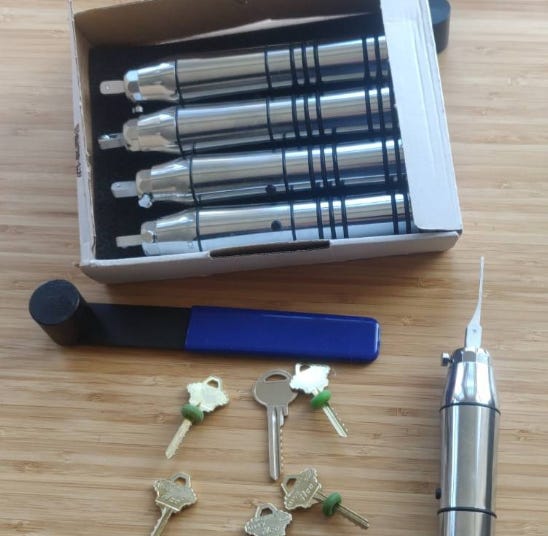In the realm of physical penetration testing, the art of lockpicking holds a position of both reverence and essential practicality. As practitioners dedicated to testing and improving the physical security measures of buildings, penetration testers often find themselves at the threshold of a door, contemplating the challenge posed by the lock that stands between them and their objective. Among the myriad techniques available, bumping and kinetic attacks on pin tumbler locks have gained popularity for their efficacy. However, as with any method, they come with their own set of advantages and disadvantages. Let's delve into these methods, weighing their pros and cons to provide a comprehensive understanding.
A primer on Picking
Traditional lockpicking, of standard pin tumbler locks, involves two primary tools: a pick and a tension wrench. The lockpicker uses the tension wrench to apply slight pressure to the lock's plug, simulating the turning force applied by a key. Meanwhile, the pick is used to manipulate each pin within the lock individually, elevating them to the shear line, the point at which the plug can rotate freely. The objective is to lift each pin to the correct height, allowing the plug to turn and the lock to open. This technique demands patience, sensitivity to subtle feedback through the tools, and a thorough understanding of the lock's pin configuration, making it a skill that is refined with practice and experience.
In contrast, bumping and kinetic attacks represent a more forceful approach to lockpicking, relying on the application of kinetic energy rather than delicate manipulation. Bumping involves using a specially cut key, known as a bump key, which is inserted into the lock and then struck with a tool, such as a hammer. The force of the impact transfers energy to the pins, causing them to jump above the shear line momentarily, which can allow the lock to be turned using the bump key.
For those curious, the little green “donut” is to push the key back into the correct position after each hit of the hammer. Without it being there, you would need to manually pull the key out a bit before each hit.
Similarly, kinetic attacks utilize tools like electric pick guns or snap guns to rapidly apply force to all the pins at once, mimicking the effect of bumping but in a continuous, automatic manner. These methods bypass the need for individual pin manipulation, offering a quicker, albeit less subtle, way to open locks.
Keep reading with a 7-day free trial
Subscribe to Covert Access Team to keep reading this post and get 7 days of free access to the full post archives.







